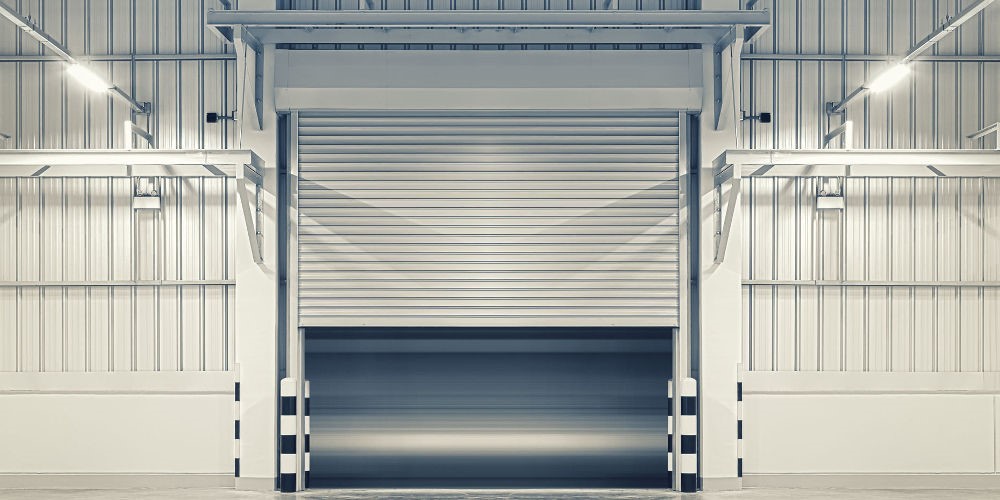Safety First: Essential Considerations for Commercial Overhead Doors
Commercial overhead doors are a critical component of many industrial and retail environments, and they play a vital role in everything from security and energy efficiency to operational flow. However, their size, weight, and constant use also make them potential safety hazards if not properly managed.
We’ll dive into the essential safety considerations businesses need to think about when it comes to commercial overhead doors, from key safety features and industry standards to best practices for preventing accidents and injuries. By understanding and implementing these critical safety measures, businesses can protect their employees, customers, and assets while ensuring smooth operations on a day-to-day basis.
Be Risk Aware
Commercial overhead doors, while essential for many businesses, come with inherent risks that have to be understood and mitigated. Crushing and pinching points are perhaps the most obvious hazards, particularly at the bottom of the door and along its tracks, which can cause severe injuries if body parts are caught as the door closes.
Similarly, falls and impacts are a significant risk, especially when doors are improperly secured or suddenly activated. Importantly, another issue is electrical hazards – due to the powered nature of many commercial doors, with the potential for shocks or electrocution if wiring is faulty or improperly maintained.
Schedule Regular Inspections and Maintenance
A robust inspection and maintenance process is vital for the ongoing safety and reliability of these doors. In addition to daily visual checks by trained staff to quickly identify common issues like damaged components or obstructions, it’s also worthwhile booking in monthly operational tests to ensure all safety features, such as auto-reverse mechanisms and photo eyes, are functioning correctly.
On a quarterly basis, book in professional inspections by certified technicians who can catch more subtle issues and address wear and tear before it becomes a safety hazard. Lastly, annual comprehensive evaluations should include a thorough examination of all the mechanical, electrical, and structural components. Maintaining detailed maintenance schedules and records is crucial for tracking the door’s condition and also for demonstrating due diligence in case of accidents or regulatory inspections.
Adhere to Industry Standards and Regulations
There are many safety regulations businesses need to adhere to, but especially in industrial and manufacturing settings where machinery and materials can pose a bigger risk. The Occupational Safety and Health Administration (OSHA) sets out the requirements for workplace safety, and these include specific guidelines for powered industrial doors. These guidelines cover aspects like installation, maintenance, and operational safety measures.
But it’s also important to note that local building codes might include specific requirements for commercial doors, particularly in terms of fire safety and emergency outlets. Companies need to ensure they’re complying with these various standards and regulations, not just as a legal obligation but as a fundamental aspect of ensuring a safe working environment.
Follow Best Practices for Accident Prevention
Prevention is the best course of action when it comes to safety, especially for minimising the risks associated with commercial overhead doors. First, businesses need to ensure they’re choosing the right type of door and that the specifications are appropriate for the specific application and environment. It’s also vital that the door is installed by a qualified professional to ensure the door functions safely from day one.
Clear signage and warning systems should be prominently displayed around the door area, alerting staff and visitors to the potential hazards and operational procedures. Establishing clearly marked safety zones around the door also helps prevent accidents by keeping people at a safe distance when the door is in motion, and creating a culture of awareness.
Invest in Employee Training and Education
Your workplace is only as safe as the people working in it, which is to say that while you may have invested in safer components, if your employees aren’t trained sufficiently, accidents will still happen. Comprehensive employee training and education form the backbone of any effective safety programme, and knowing how to use overhead doors properly is included. Staff need to understand how to safely open, close, and monitor the doors, as well as spot any potential hazards so they can report issues before they lead to accidents.
Emergency procedures should be clearly outlined and regularly practised too, including what to do in the event of the door malfunctioning, power outages, or if someone becomes trapped. Establishing a clear system for reporting and documenting issues also encourages employees to take an active role in workplace safety. Leaders should schedule in refresher courses throughout the year, especially in the event of updates to new safety features or a change of procedures to help keep safety at the forefront of everyone’s mind.
Upgrade Older Door Systems
As technology advances and safety standards evolve, upgrading older commercial overhead door systems becomes an important consideration for many businesses. Retrofitting safety features, such as photo eyes, safety edges, and automatic reversing mechanisms, can significantly improve the safety of older doors without the need for complete replacement.
However, it’s essential that business owners and health and safety professionals assess whether upgrading is sufficient or if a full replacement is necessary. There are a few factors to consider here:
- The door’s age and overall condition
- How often it’s used
- The cost of upgrading versus replacing it fully
While the initial investment in safety improvements may seem substantial, it’s important to weigh this against the potential costs of accidents, liability, and business disruption – often, these costs far outweigh the initial one-off investment.
Proactive Prevention
The safety of commercial doors is a multifaceted issue that requires ongoing attention and commitment. From understanding key safety features and adhering to industry standards to implementing best practices and providing thorough employee training, each aspect plays a crucial role in preventing accidents and injuries. Ultimately, prioritising safety in the management of commercial overhead doors prevents accidents as well as helping to enhance operational efficiency, reduce liability, and demonstrate a company’s commitment to the wellbeing of its stakeholders.



